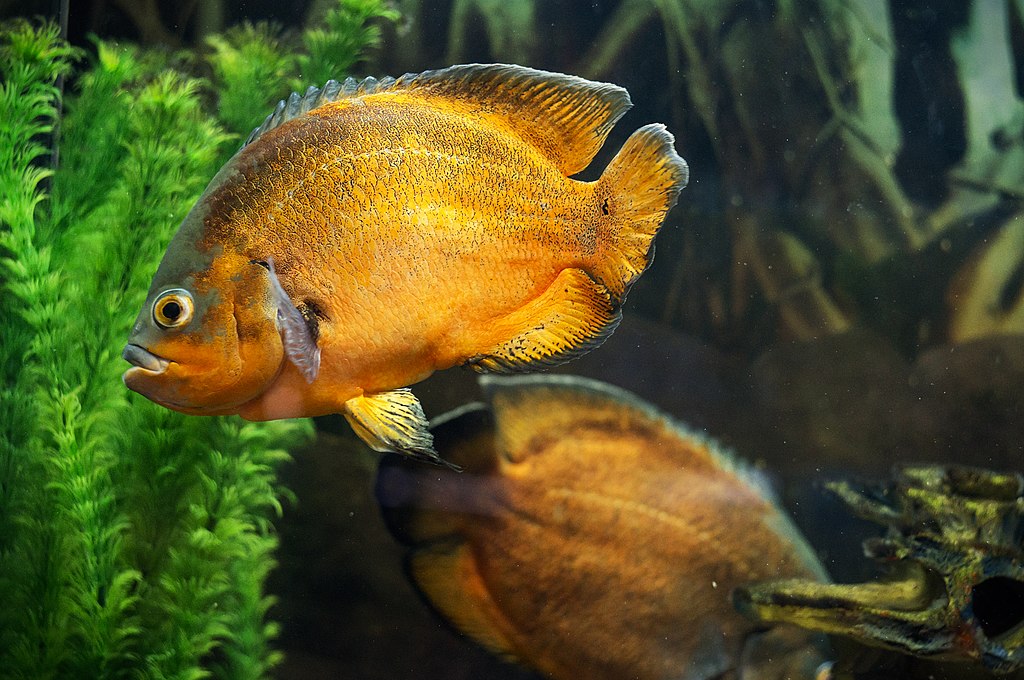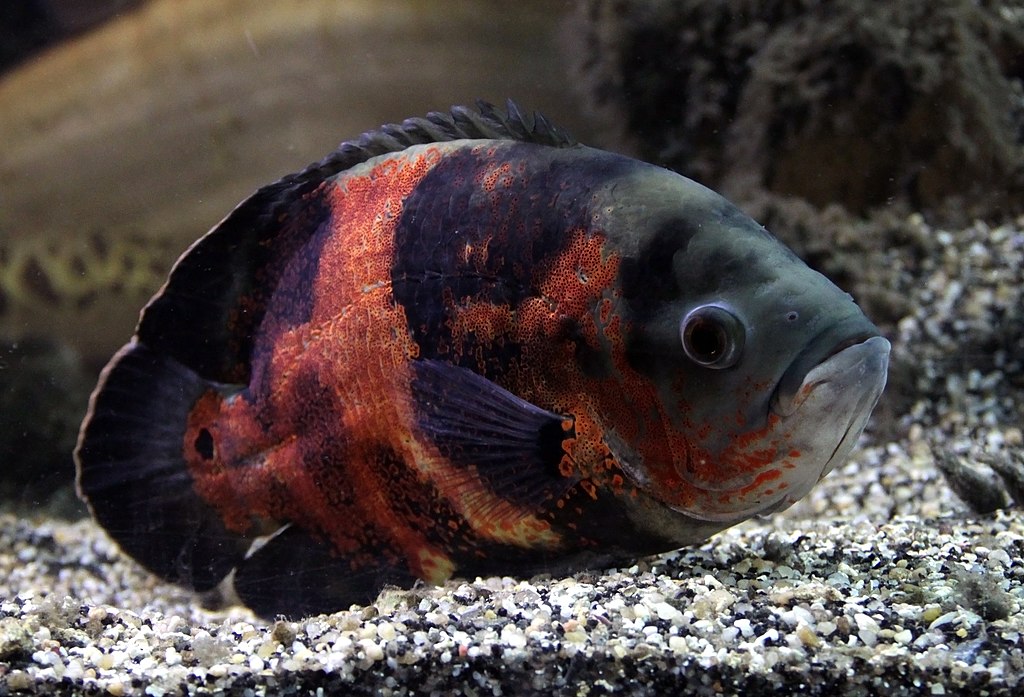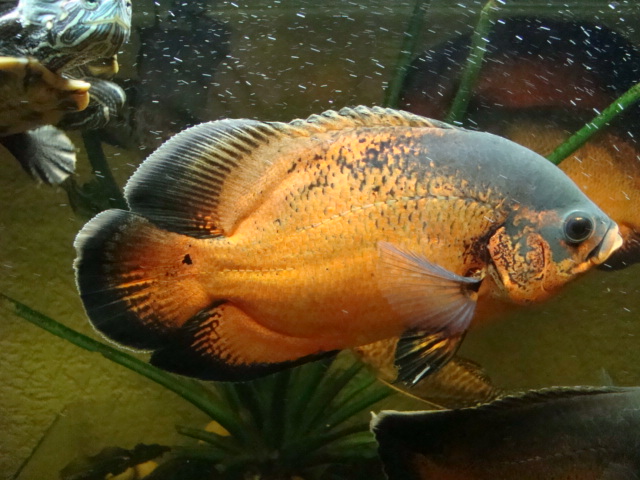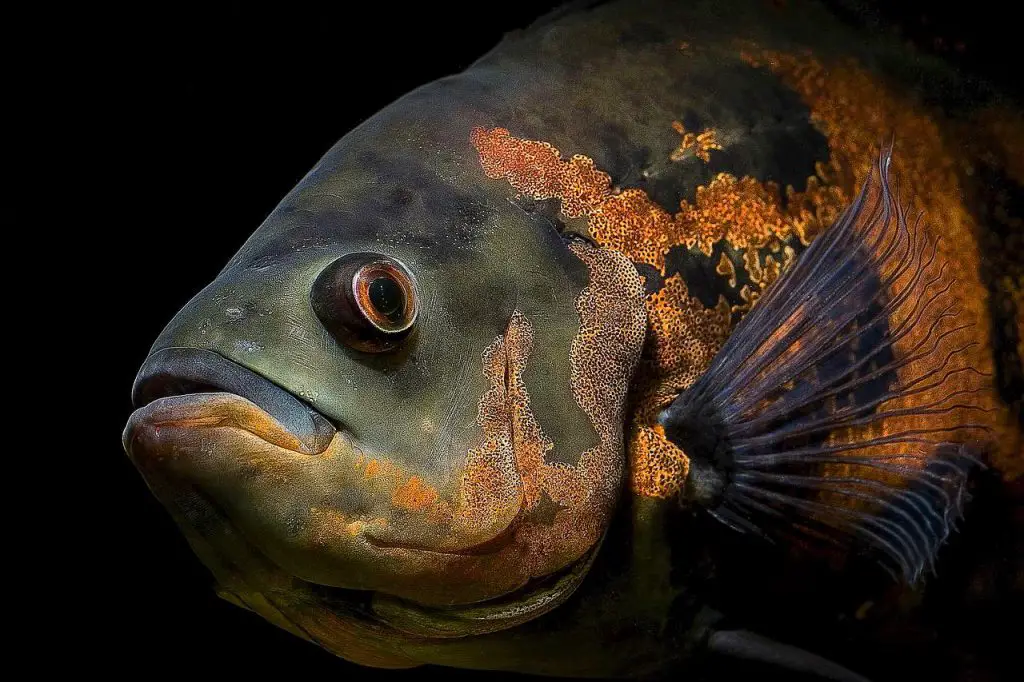Oscar fish, renowned for their striking beauty and engaging personalities, are more than just pets; they’re captivating family members. Aquarium enthusiasts cherish these intelligent and interactive creatures, often forming a bond that transcends the usual pet-owner relationship. It’s this deep connection that makes understanding and addressing their health issues, such as skin peeling, critically important.
A Closer Look at Skin Health
Skin problems in Oscar fish, particularly peeling skin, are not just a matter of aesthetics but a significant health concern. This article aims to shed light on the causes, symptoms, and treatments of this distressing condition.
Skin Peeling in Oscar Fish

Poor Water Quality: Ammonia and Nitrite Hazards
Understanding the Menace of Ammonia and Nitrites: One of the primary culprits behind skin issues in Oscar fish is poor water quality, particularly high levels of ammonia and nitrites. These toxic substances can accumulate in an uncycled or improperly maintained tank, posing a serious threat to your Oscar’s skin health.
Symptoms and Solutions: Ammonia burns manifest as red, inflamed wounds with peeling skin around them, turning black as they heal. To combat this, regular water testing and maintenance are crucial. In cases of ammonia spikes, promptly transferring the fish to a tank with clean, cycled water can mitigate damage and aid recovery.
The Threat of Parasitic Invasions: Ich and Velvet

Battling Ich (White Spot Disease): Ichthyophthirius multifiliis, commonly known as ich, presents tiny white spots on the fish’s skin and fins. These spots are the parasites burrowing into the fish’s body, causing skin peeling, open wounds, and potential fatality if left untreated.
The Velvet Scourge: Velvet, caused by Piscinoodinium pillulare, cloaks the fish in a gold-dust-like layer, leading to respiratory distress and skin degradation. While less common in Oscars, it remains a significant threat.
Effective Treatments: For both ich and velvet, early detection is key. Treatments range from temperature adjustments (raising the tank’s temperature to 86°F for ich) to adding specific medications. Quarantine new fish to prevent these parasites from entering your tank.
Physical Injuries: Curiosity’s Consequence
Accidents and Injuries: Oscars’ curious nature often leads them into tight spots, resulting in scrapes and injuries that can resemble peeling skin.
Healing and Prevention: In physical injury cases, maintaining pristine water quality and providing a safe, obstruction-free tank environment are vital. For serious injuries, consulting with a vet for potential medication to prevent infection or fungal growth is recommended.
Effective Treatment Strategies for Oscar Fish Skin Peeling
Combatting Ammonia Burn: Immediate Action and Long-Term Care

- Immediate Relief: In cases of ammonia burn, the first step is to move the Oscar to a safe environment – a separate tank with clean, well-cycled water. This provides immediate relief from the toxic conditions of the original tank.
- Long-Term Strategies: Regularly monitor water parameters to avoid future ammonia spikes. A reliable filtration system and a consistent cleaning schedule are essential preventive measures.
Eradicating Parasitic Threats: Ich and Velvet
- Tackling Ich Head-On: Raising the tank’s temperature to 86°F (30°C) speeds up the parasite’s lifecycle, making it more vulnerable to treatment. Over-the-counter medications like Ich-X can be highly effective, especially in advanced cases.
Additionally, treatments such as aquarium salt and heat treatment can be applied. Aquarium salt encourages the parasites to release from the fish, and increasing the tank temperature can accelerate the life cycle of the parasite, making the treatment more effective.
- Velvet’s Defeat: Treating velvet involves a similar approach but may require different medications tailored to target Piscinoodinium pillulare. Quarantine new fish to prevent the introduction of this parasite.
Healing from Physical Injuries: Recovery and Prevention
- Prompt Care for Wounds: If the skin peeling is due to physical injury, clean water, and a stress-free environment are the first steps to healing. For deeper wounds, medicated treatments might be necessary to prevent secondary infections.
- Preventive Measures: Rearrange the tank to eliminate sharp edges or tight spaces that could cause harm. Regular checks for potential hazards can prevent future injuries.
General Health Maintenance: Diet and Environment
- Balanced Diet for Strong Immunity: A nutritious diet keeps Oscar’s skin healthy. Foods rich in vitamins and minerals boost the fish’s immune system, aiding in quicker recovery and resistance against diseases.
- Optimal Tank Conditions: Maintaining the ideal temperature, pH levels, and cleanliness of the tank not only prevents skin issues but also promotes overall health and vitality in Oscar fish.
Long-Term Consequences and Care
- Managing Scarring and Infection: Long-term consequences of skin peeling in Oscar fish include scarring and increased susceptibility to infections. While some scales might regrow, they may be smaller or differently colored than the original scales, indicating permanent scarring. In severe cases, permanent damage to the fish’s scales and skin can occur.
- Continuous Monitoring and Care: It’s crucial to continuously monitor the health of your Oscar fish and provide appropriate care, especially after recovering from skin issues. Maintaining excellent water quality and a stress-free environment is key to preventing future health problems.
Conclusion: Ensuring the Health and Happiness of Your Oscar Fish
Proactive Care and Vigilance
In caring for Oscar fish, being proactive about their health is paramount. Understanding the causes and treatments of skin issues is just the beginning. Monitoring tank conditions, water quality, and fish behavior are crucial in the early detection and prevention of health problems.
Knowledge and Action
Armed with the knowledge from this guide, you are now better equipped to recognize and address skin peeling in your Oscar fish. Remember, timely action can make all the difference. When in doubt, seek advice from a veterinarian or an aquarist expert to ensure your Oscar receives the best care possible.
A Commitment to Continuous Learning
Finally, the journey with your Oscar fish is an ongoing learning experience. Stay curious, keep researching, and share your experiences with fellow aquarists. Your dedication to your Oscar’s well-being not only enhances their quality of life but also enriches your experience as an aquarist.


